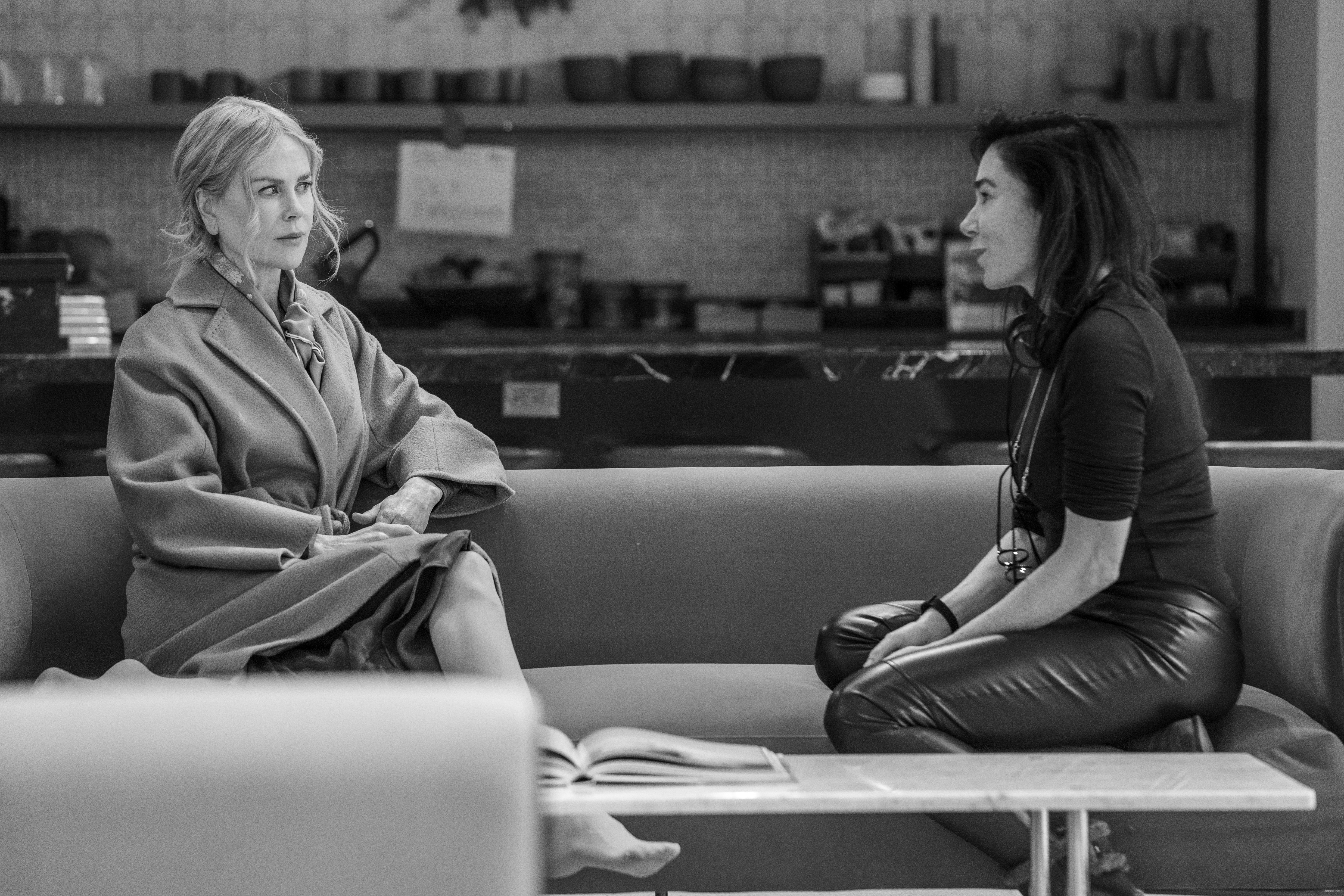Visualizing the Invisible: Motherhood in Marielle Heller’s Nightbitch

By Ellie Powers
Marielle Heller labors over creating realistic portraits of human behavior. Yes, even in a film where a woman believes she is turning into a dog. I speak with Marielle via Zoom where she sits in her living room on the couch. Even though she had an interview just preceding our conversation and one directly after, she’s casual, relaxed with her legs folded under herself. Her responses, however, are precise; she is mindful to properly convey her intentions with this film.
Nightbitch, the filmmaker’s third feature, adapted from Rachael Yoder’s 2021 novel of the same name, stars Amy Adams as a nameless “Mother” who struggles with reclaiming her identity amidst the repetitions of stay-at-home motherhood. And, eventually, finds herself running through the streets at night in her canine form.
Sounds like a horror film. And certainly, there are elements of body horror present in the film, but overall, the film is a family drama that finds moments of comedy. What is funny about a mother turning into a dog? If you ask Marielle, quite a lot. “I find humor in everything and there's a different type of humor when you're laughing because you feel seen,” she states. “I don't think any of my movies fall generally into one genre. I like to elicit a surprising feeling or emotion, laughter amid darkness. Life is not a comedy or a drama.” I like how the Director of Photography Brandon Trost interpreted the film, adding that “for women, it’s a comedy. For men, it’s a horror film.”

Marielle does not intend to bash men, regardless of how horrified some may feel by seeing the Husband utter phrases they may have stated themselves (e.g. referring to looking after their own children as ‘babysitting’). Instead, Marielle hopes that “the experience of watching the movie has a voyeuristic effect where men put themselves in the perspective of a woman and realize this is what it feels like to go through this change in your life.”
The film distills some of Marielle’s frustrations with being a mother, an artist, a woman and feeling invisible. She points out specifically how she kept Rachael Yoder’s choice to leave all the characters nameless, “Mother” and “Husband” and “Son.” And how she infused some of her own experiences. Again, she stresses, she is happily married to a man (writer/director Jorma Taccone) and is raising a young boy as well as a girl.
The anonymity of aging women became a guiding light for Marielle’s directorial approach. Her background in acting (a graduate of UCLA’s drama program) compels her to begin always with character, finding ways to externalize the struggles of a sleep-deprived first-time mom and focusing on performance rather than leaning on an encyclopedia of film knowledge.
First, she needs a stage. She wished for the setting to be ambiguous, an unnamed suburb outside a big city during an unidentified decade. The teams looked at approximately sixty houses before they found the one. Marielle needed a “cool house with good bones and interesting choices. Maybe it was a house other people overlooked. That's why they could afford it. And then there's a layer of baby crap on top of their good taste.”
The emotional motivation of the character then informs the setting, the look, the soundscape. Take for example the opening montage which Marielle notes in a film as genre-bending as Nightbitch is crucial to teach the audience how to watch the movie. “Are we signaling to the audience that this is fantasy or are we keeping it more ambiguous? I tend to like to keep things less clear. I like the ambiguity and letting audiences have to kind of figure out what's happening. I don't know why clarity is always our value.” In this scene, Mother makes breakfast for her son with quick cuts of the same hashbrowns flipping in a pan over the course of countless days. Marielle shows us the monotony of Mother’s daily life with repetition to the point of insanity. She uses this moment to “introduce this idea that you have a slightly unreliable narrator. You're going to be in a very subjective version of the world where you're seeing how it feels to her. And how loud the clink of the pan is and how much that feels like she's done it a thousand times and how she experiences the feelings more than the reality.”
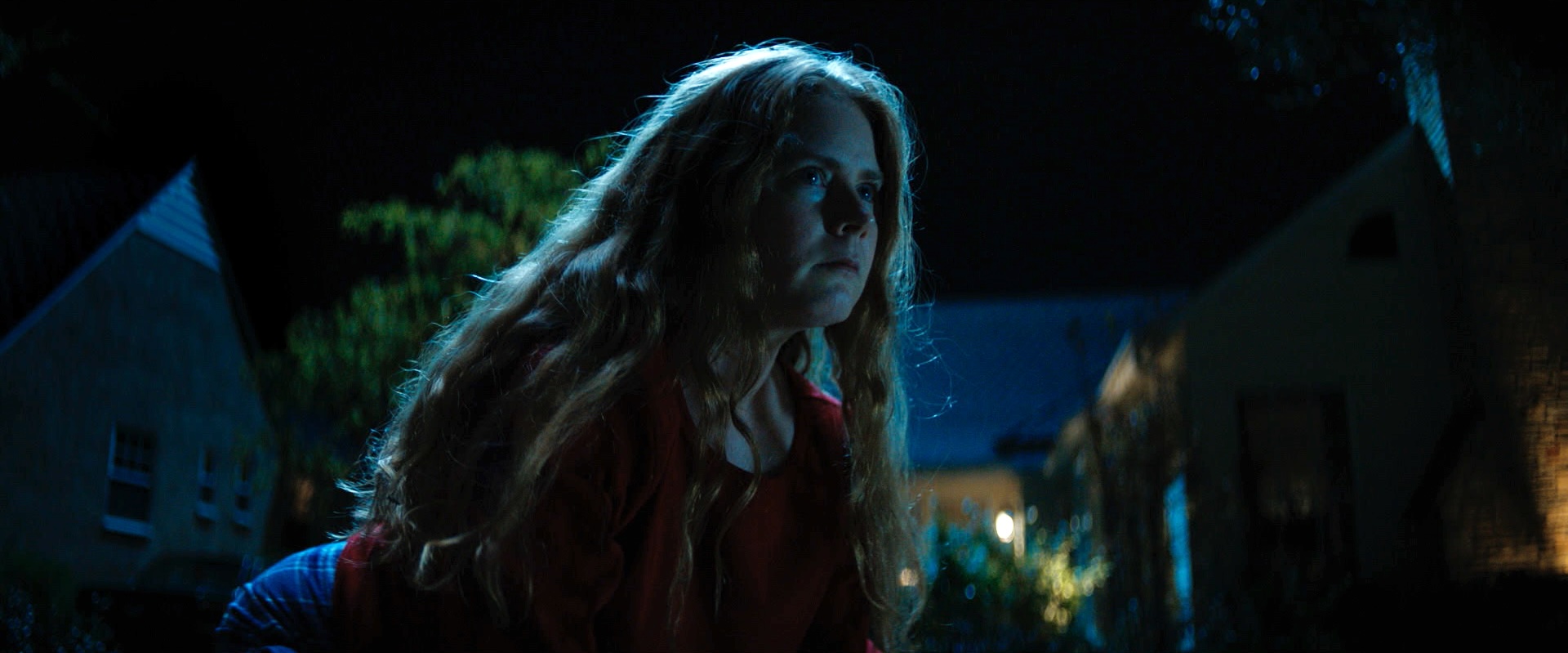
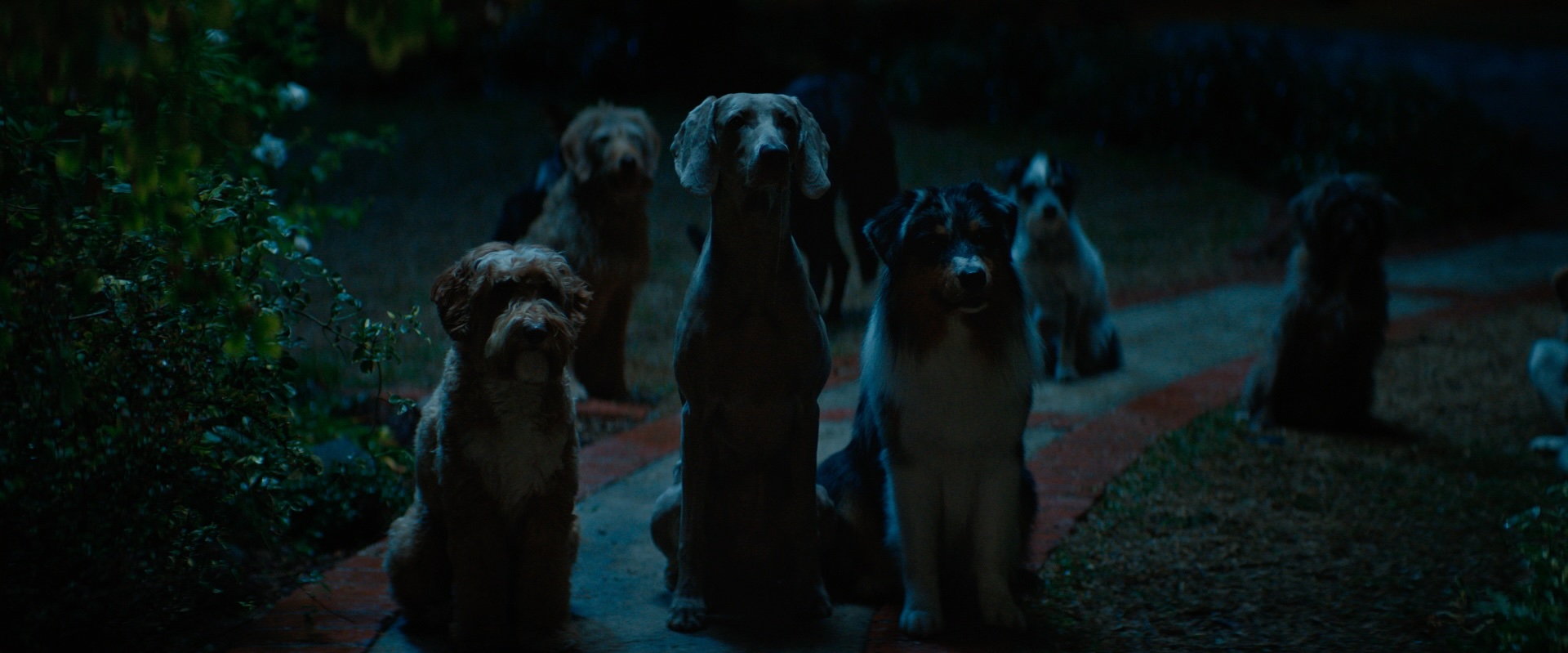
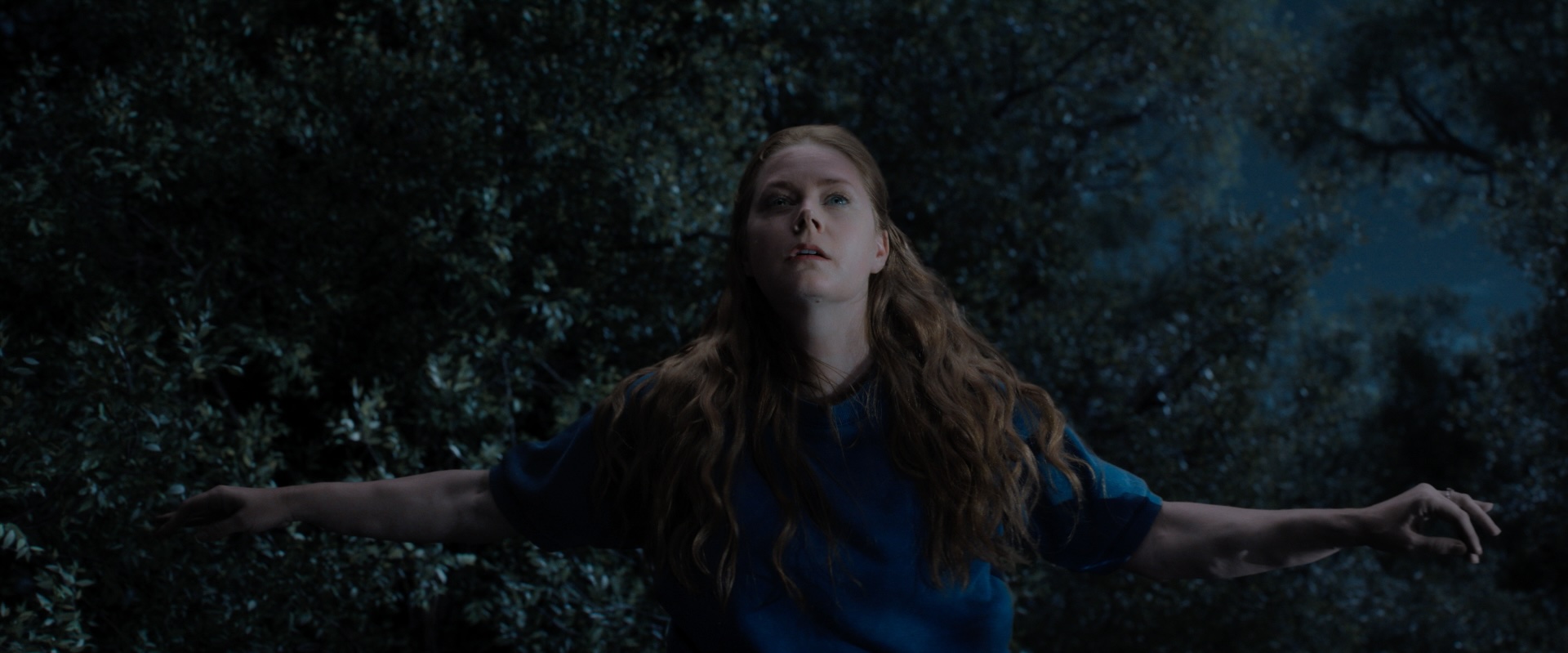
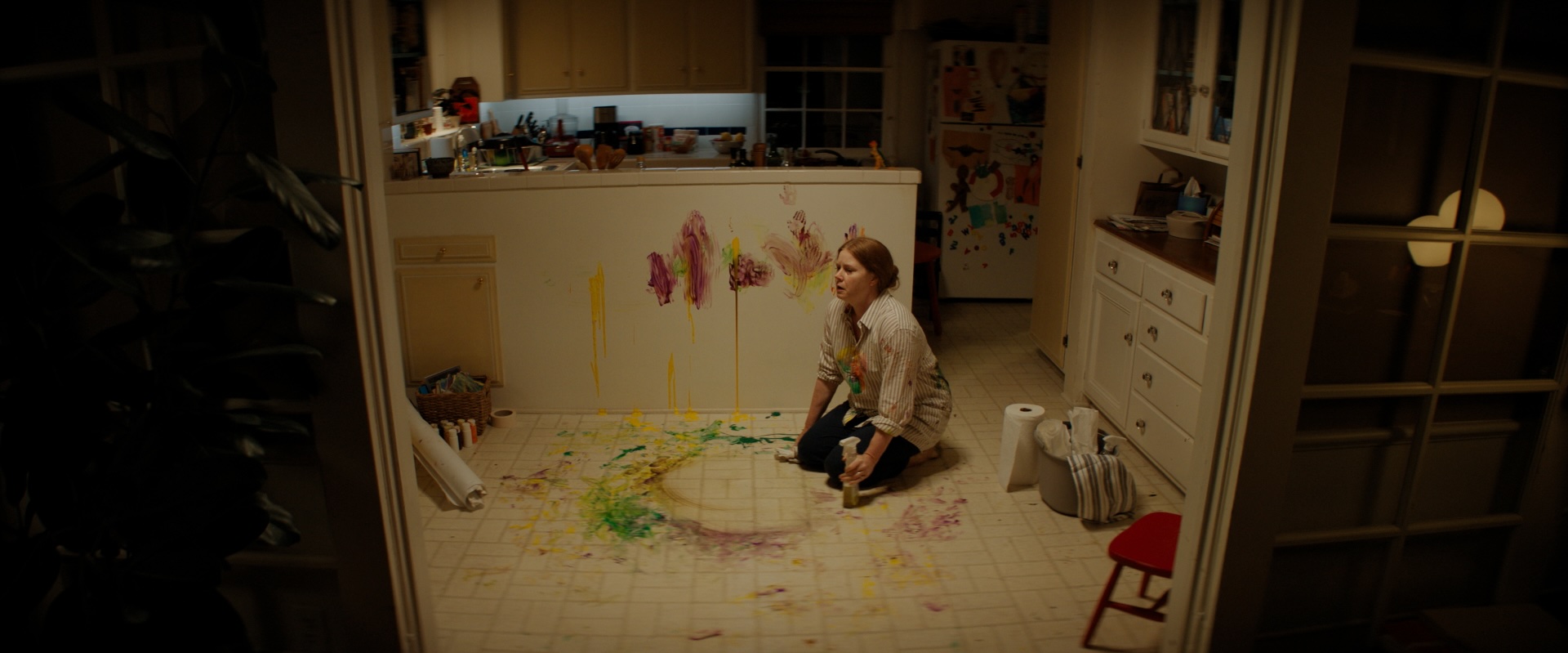

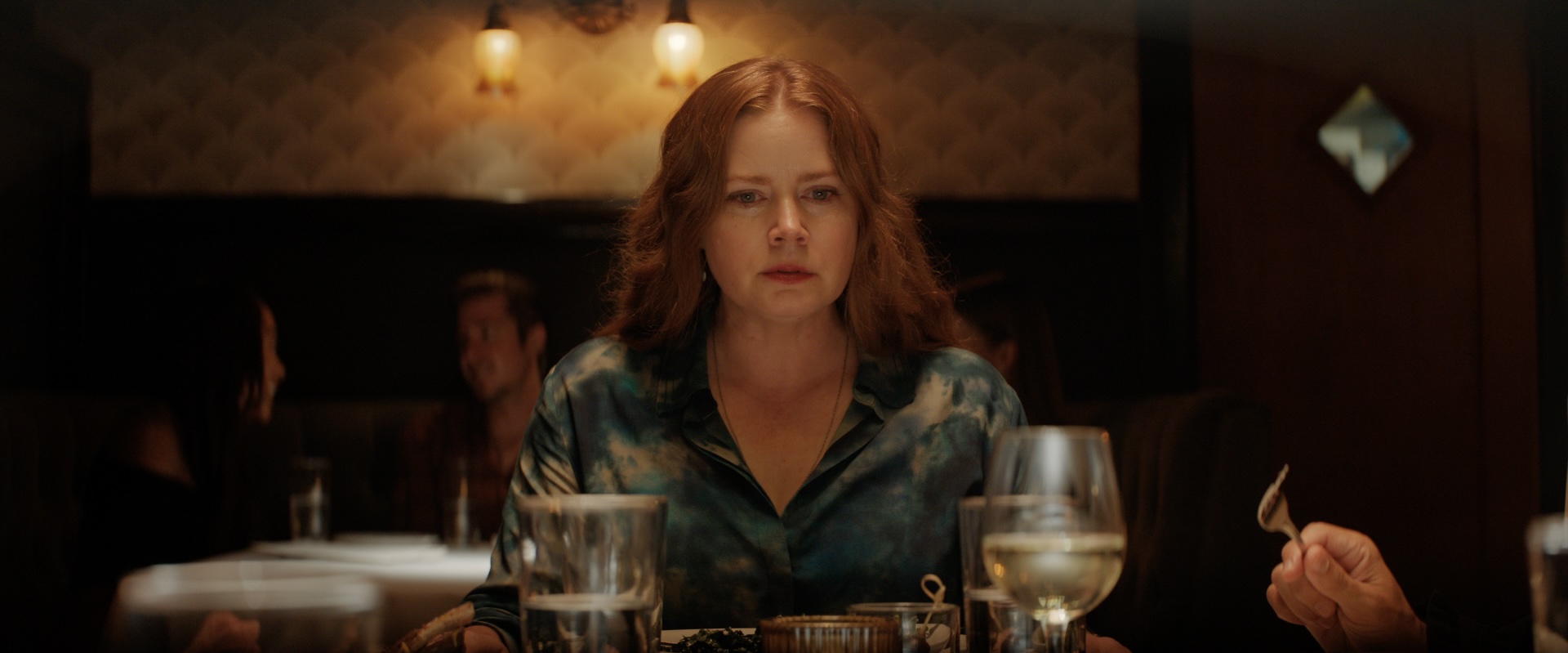
While Brandon chose these anamorphic zoom lenses to portray daily life, for the flashback sequences and the scenes in which Mother begins her transformation from human to canine, he used a Petzval lens (old portrait lenses, often over 100 years old). He intended to evoke a sense of memory with “a swirly Boca around the center of the frame and a very shallow depth of field to enhance that effect.” For the dog’s POV, Brandon experimented with glass filters thanks to Panavision that he turned the wrong way which rendered the image “smeared and out of focus on the outside edges with only a small part in the center that was in focus.” He used this filter to mimic the look achieved for the flashbacks with the Petzval but pushed even further.
The overall look leans into high contrast with rich shadows and saturated colors to emulate a film print quality. Brandon engaged Harbor Colorist Andrea Leigh Chlebak from the very beginning and gave Andrea the unique challenge of creating the initial moodboard. She hadn’t read the script yet, only the book, and recalls “drawing inspiration directly from the book’s rich details and emotional layers plus my own lived experience as a mother and artist. The look we built was deeply rooted in a distinct texture and mood that felt authentic to the narrative. It was a rare and special opportunity to help shape the film’s visual identity from the ground up, in collaboration with Brandon, by interpreting the source material in a way that felt fresh and aligned with our collective artistic direction." From there, they developed a LUT that Brandon stuck close to. During the grade, therefore, the biggest lift was “fine-tuning the tonality to match the various storytelling styles. This gave us the freedom to subtly enhance key narrative elements—like the inner monologue, daydream sequences, and altered flashbacks,” says Andrea. “With a bold foundation in place, we adjusted contrast and brightness as needed to amplify the raw, emotive feel that we carried throughout the story.”
Director of Photography Brandon Trost used a Panavision anamorphic zoom lens (which he didn’t even know existed) to capture the emotional intention of this moment. He begins with a wide shot of Mother in the kitchen cooking and playing with her son and then “pushes in and pushes in and then, suddenly, goes beyond where you think a normal push shot would go and keeps going and going and going until we just see her eyes, burning with this kind of quiet fire that was part of the macro of this movie. We were interested in very close details like that.” Brandon employed these slow zooms throughout the film to further the feeling of entering the mind of Mother and exposing the unseen. By putting this lens which was designed for a smaller sensor camera on the Arri Alexa LF, he discovered a resulting “cinematic veil” with a sharpness in the center of the frame.
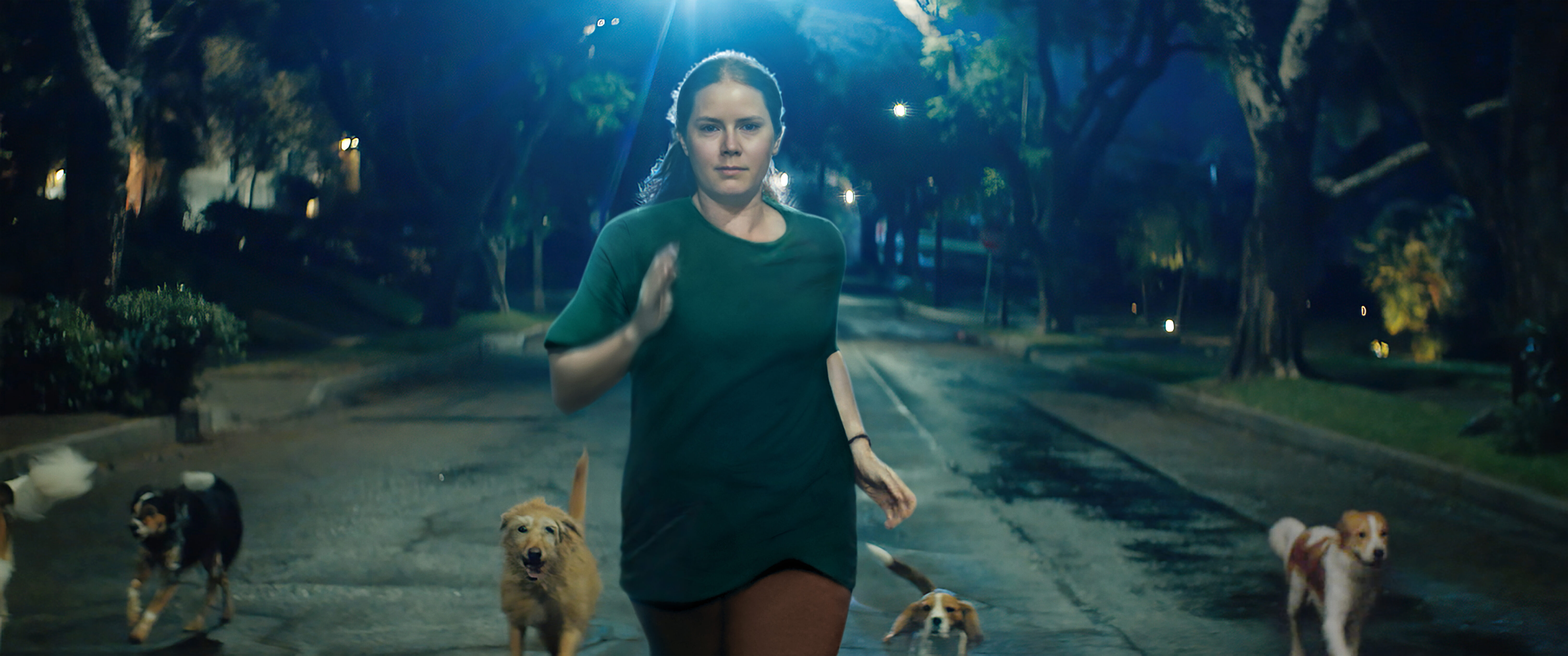
The sound design and mix were another aspect that Marielle carefully considered to craft her subjective portrait. Working with Harbor Supervising Sound Editor Damian Volpe, she considered how the different worlds – society, her internal life, nature, and animals – should interact. How do you use sound to expose the invisible? For Marielle, the answer is a spoken aloud monologue in addition to the voiceover. A choice she made to “try to reflect how invisible she feels in the world and how much she feels like nobody is listening to her.” This internal, sometimes externalized, monologue is juxtaposed with the loud, dissonant, overwhelming noise of parenthood and the sounds of the natural and animal worlds. Whether it be cicadas or the growls and barks of dogs (or those that Amy Adams added), Marielle uses sound to reflecting Mother’s emotional state and eventual transformation.
Specifically for Mother’s transformation from woman to dog, Damian experimented with vocoding, a process which breaks down the voice into frequencies which he manipulated to blend Amy’s performance with various animals. Damian expresses how he “likes to start with something organic, so I took Amy's performances from the ADR session – all sorts of animalistic sounds from growls to barks to wines to heavy panting and breathing – and melded them with various animals, wolves and dogs, to create a hybrid. Sometimes, that was successful. Often, it was easier for me to super carefully edit Amy’s voice to end with something canine, or the reverse, start with a scream and then hit a dog high pitched dog sound in the middle of the sound and carry it to the end.” Damian also used this technique to clearly delineate between Mother’s transformation and the other dogs whose personalities were created using recordings of real dogs.
Nightbitch is now
streaming on Hulu.
Photo Courtesy of Searchlight Pictures.
© 2024 Searchlight Pictures All Rights Reserved.
Beginning first with the often swept under the rug realities and emotions of motherhood, Marielle intends Nightbitch to be the beginning of a conversation about the balancing act of having children and remembering who you are. She tells me that the main reason she made this movie was that she had not seen other movies that had done what this movie does.
Unrelated, she thinks men should apologize more. “Men apologizing should be the new Bechdel test,” she jokes. “I'm raising a young boy as well as a young girl and I'm married to a man. I see how much our society does not teach young men how to apologize.” When I first jumped on the call, Marielle apologized for being late and for having issues with the Zoom link which caused me to apologize for her technical difficulties. She may have a point there. Here’s hoping I don’t grow a tail.

